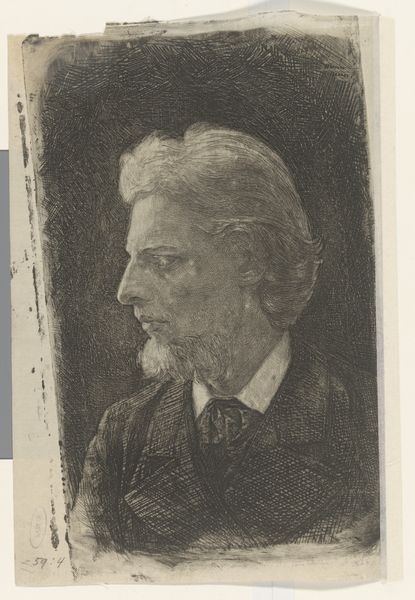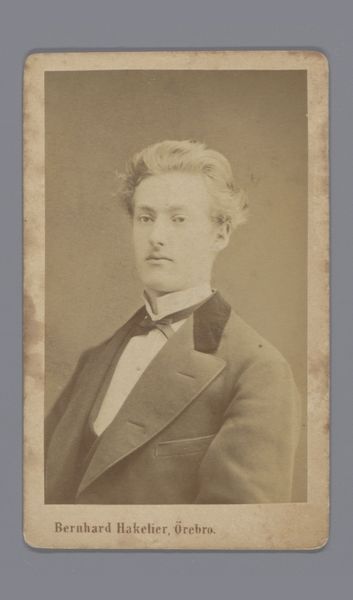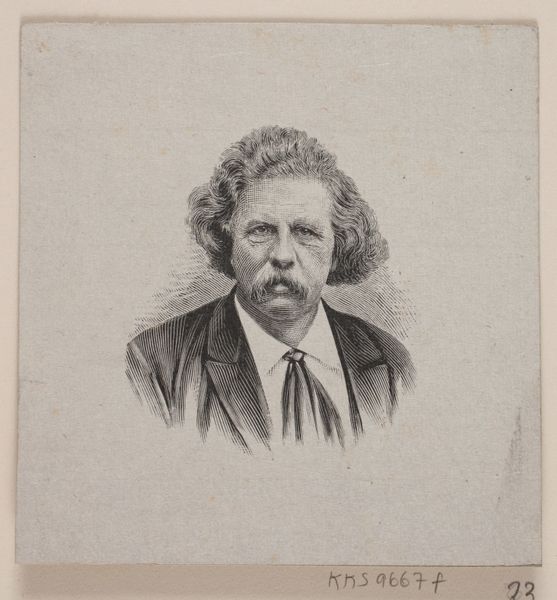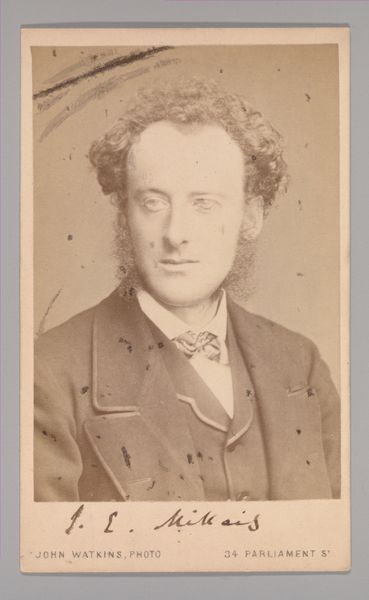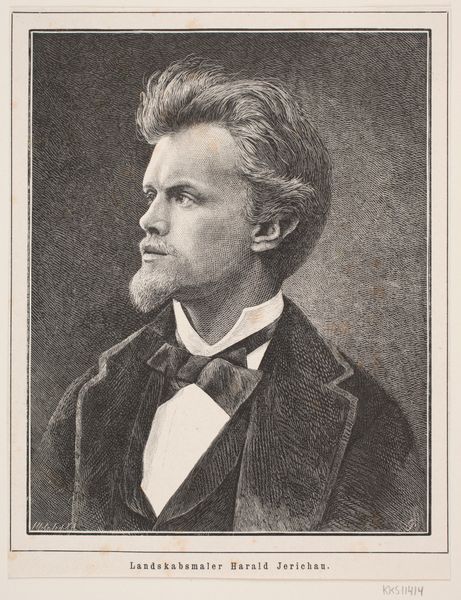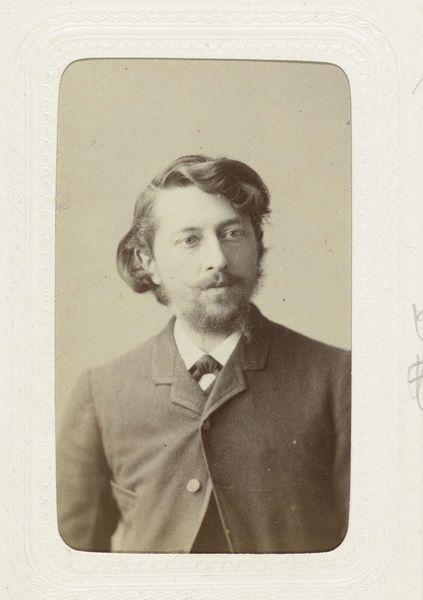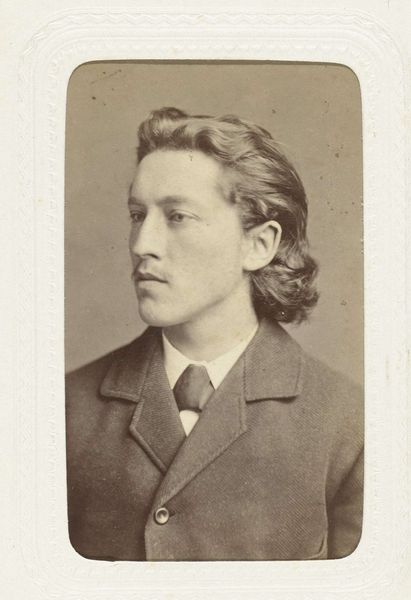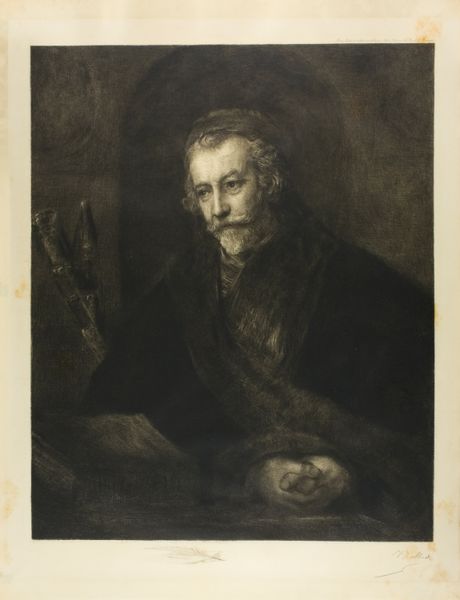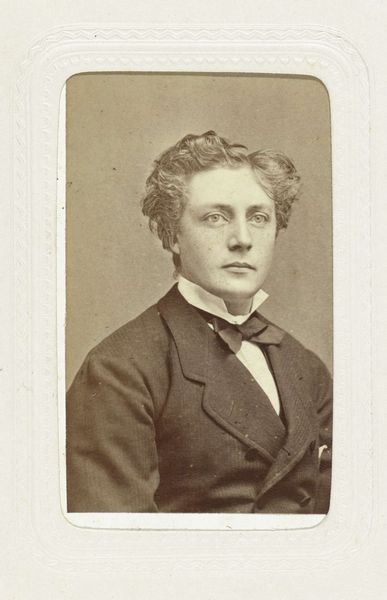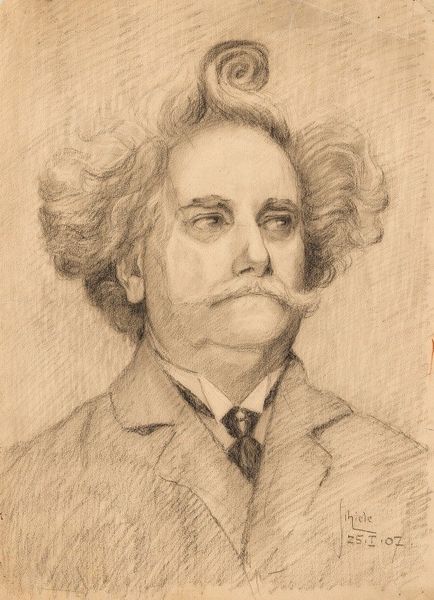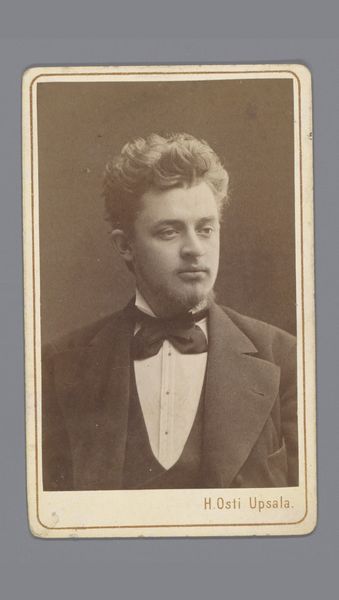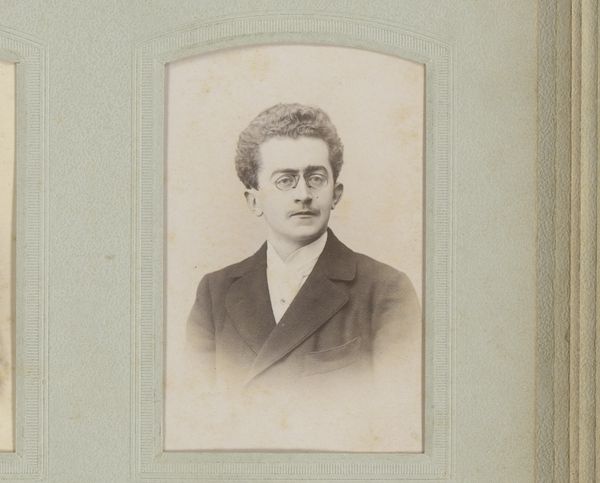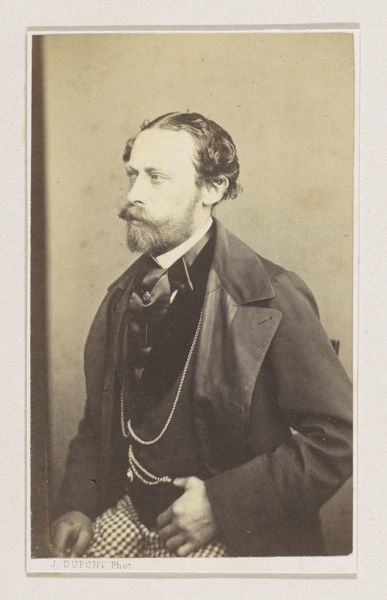
painting, oil-paint
#
portrait
#
character portrait
#
portrait image
#
portrait
#
painting
#
oil-paint
#
portrait subject
#
portrait reference
#
portrait head and shoulder
#
portrait drawing
#
portrait art
#
fine art portrait
#
realism
#
celebrity portrait
Dimensions: height 80 cm, width 60 cm, depth 7.5 cm
Copyright: Rijks Museum: Open Domain
Curator: Here we have Johan Heinrich Neuman's "Portrait of Jacques Fabrice Herman Perk," completed in 1882. It's an oil painting. My first thought is that it possesses a gentle melancholy. The palette is subdued. Editor: Absolutely. Note how Neuman uses a very limited range of colors, primarily browns and muted greens, to create a somber mood, echoed by the subject's serious, slightly averted gaze. Curator: Perk, who died at just 21 years old, was a celebrated poet. This portrait, created posthumously, is interesting in how it uses Realism. I'm intrigued by the artist's formal decisions, such as rendering it within an oval frame. What's the implication of this decision, do you think? Editor: Framing a portrait within an oval was quite common then, referencing earlier traditions of miniature painting and implying a kind of preciousness or sentimental value. Given Perk's early death and his rising fame, this treatment reinforces the idea of a life cut short, almost idealized. He is rendered in a way meant to last forever in cultural memory. Curator: The soft blending of the paint also contributes to a sense of idealization. If you look closely, the handling of light across Perk's face lacks stark contrasts, lending the subject a dreamlike appearance. The jacket itself obscures any overt social signals; the dark, coarse weave seems merely textural rather than representative of a status. Editor: Precisely. Consider the historical context of this work. Perk was a part of the Dutch literary movement called the "Tachtigers," known for their emphasis on individualism and aestheticism. His early death transformed him into a romantic symbol for his cohort. Aesthetically this is not just about rendering Jacques Perk but commemorating him within a constructed social narrative. Curator: That narrative extends, inevitably, into our own reception of the painting. We can hardly look at this work without knowing, to some extent, of Perk's fate. Does that alter how we understand Neuman's brushwork? Is the softness merely technical skill, or does it convey a sense of loss? Editor: It's a complex interplay between artistic skill and cultural messaging. What do we memorialize, and how do artistic choices subtly direct the way a society should value it? This work helps illustrate how such mechanics occur within culture. Curator: Indeed. By delving into this artwork's stylistic features, and thinking of the context in which is emerged, hopefully our visitors can arrive at an enriched sense of artistic appreciation. Editor: Well said, that intersection of formal elements and historical background deepens how we see art in both personal and cultural memory.
Comments
No comments
Be the first to comment and join the conversation on the ultimate creative platform.
